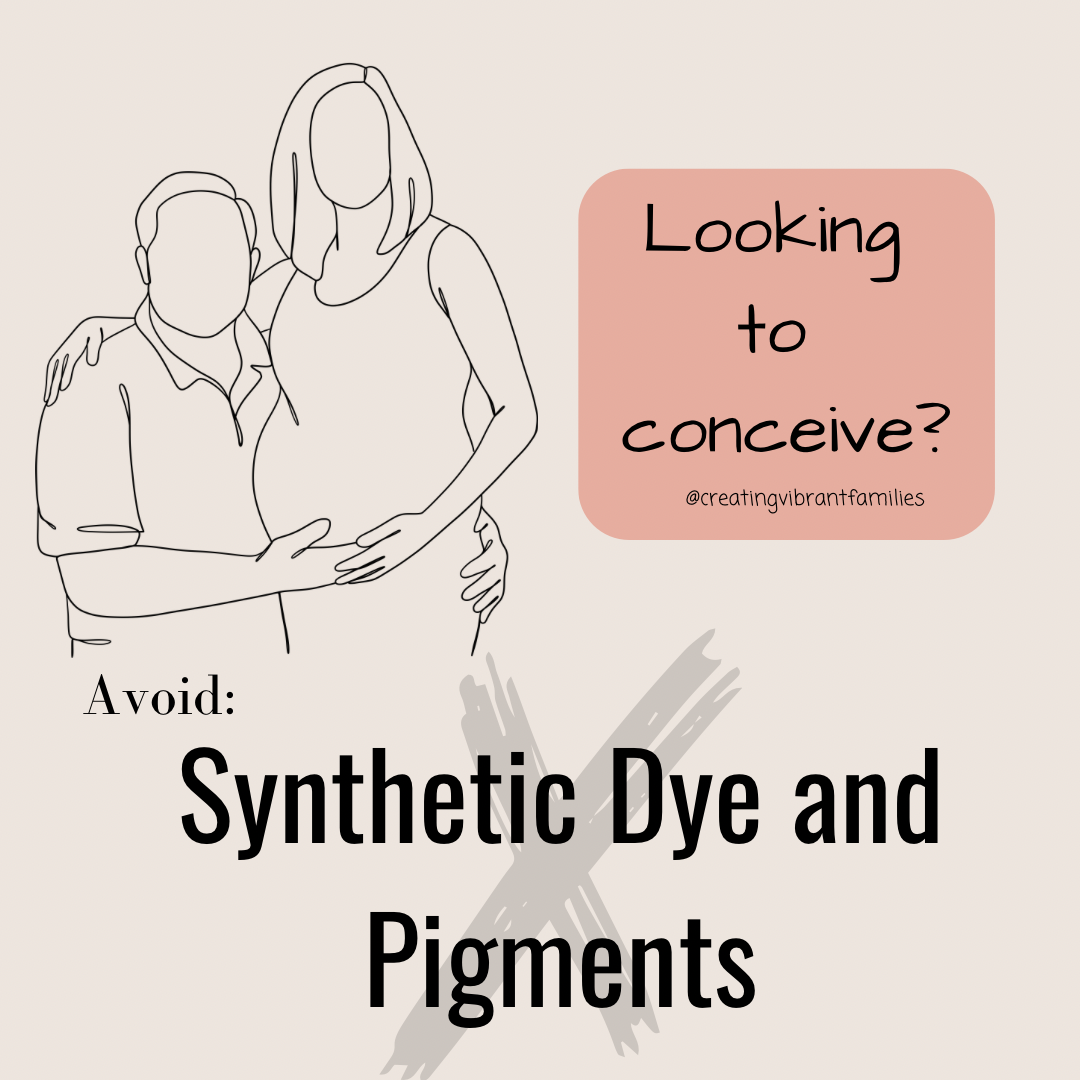A Guide to Avoiding Synthetic Dyes and Pigments
In the quest for optimal health, especially when considering reproductive wellness, it's crucial to pay attention to the ingredients in the products we consume. One often overlooked but potentially harmful group of substances is synthetic dyes and pigments. In this blog post, we'll explore the impact of these additives on overall health and reproductive well-being, identify common names found on labels, and shed light on where they are commonly used.
Understanding Synthetic Dyes and Pigments:
Synthetic dyes and pigments are artificial colorants that are often added to enhance the visual appeal of various products, ranging from foods and beverages to cosmetics and pharmaceuticals. While they may make products look more attractive, the health implications of these additives deserve closer scrutiny, especially for those on the journey to parenthood.
Health Concerns Associated with Synthetic Dyes:
Research suggests a potential link between synthetic dyes and various health issues, including allergies, hyperactivity in children, and reproductive challenges. For individuals looking to conceive, avoiding these additives may be a proactive step toward creating a healthier environment for both the mother and the developing fetus.
Common Names on Labels: To make informed choices, it's essential to recognize the various names synthetic dyes and pigments might go by on ingredient labels. Some commonly used ones include:
FD&C Blue No. 1 and No. 2
Red 40 (Allura Red AC)
Yellow 5 (Tartrazine) and Yellow 6
Caramel Coloring
Titanium Dioxide
Blue 2 (Indigo Carmine)
Green 3 (Fast Green FCF)
Citrus Red 2
Erythrosine (Red 3)
Sunset Yellow FCF
Where They Are Found: Synthetic dyes and pigments are pervasive in our environment, and they can be found in various everyday products. Some common sources include:
Processed Foods: Many packaged snacks, candies, and beverages contain synthetic dyes to enhance their visual appeal.
Cosmetics and Personal Care Products: From lipsticks to shampoos, these additives are often used in the beauty industry.
Medications: Some pharmaceuticals may use synthetic dyes to color pills and liquids.
Textiles: Clothing and fabrics may be dyed using synthetic colorants.
Household Products: Cleaning agents, candles, and other household items may also contain these additives.
As individuals embark on the path to parenthood, making informed choices about the products they consume becomes paramount. Steering clear of synthetic dyes and pigments can contribute to overall health and reproductive well-being. By familiarizing yourself with the common names on labels and being mindful of where these additives lurk, you can take proactive steps toward creating a healthier environment for both you and your future family.


